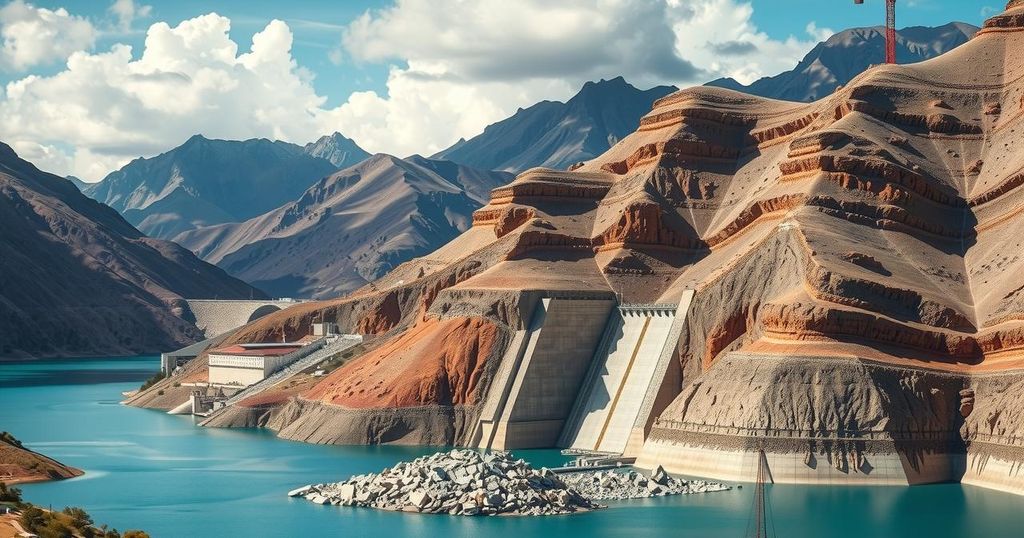China is advancing hydroelectric projects in earthquake-prone Tibet, despite rising concerns about environmental risks, as a recent quake has resulted in significant casualties. The number of planned dams has surged, aiming for large energy outputs, while local protests and the potential for strained relations with India complicate the situation.
China is pursuing extensive hydroelectric projects in Tibet, despite the region’s vulnerability to seismic activity. A recent earthquake, measuring 7.1 on the Richter scale, has resulted in a death toll of 126 and has disrupted rescue efforts due to harsh winter conditions. Approximately 14,000 personnel have been deployed to aid recovery, amidst reports of thousands of homes being demolished.
Tibet’s geographical instability raises concerns regarding the construction of large dams. Studies indicate that the total number of dams in the region is increasing, with existing or planned projects escalating from 114 to 193, aiming to generate substantial hydropower output. The International Campaign for Tibet (ICT) cites that around 80 percent of these structures are classified as large or mega dams, potentially producing energy equivalent to Germany’s entire output in 2022.
Despite the risks associated with landslides and flash floods exacerbated by dam construction, China remains resolute in its ambitions. The implications of diverting river courses could further strain diplomatic relations with neighboring India. Moreover, adjacent provinces have witnessed several dam projects, suggesting a shift in focus toward Tibet as part of Beijing’s infrastructure strategy.
There have been significant local protests against dam constructions, particularly a recent opposition in Sichuan where planned developments would impact culturally significant sites. Nonetheless, such infrastructure projects continue to proceed, reflective of China’s overarching objective to enhance energy production while minimizing reliance on fossil fuels. Official announcements have indicated a significant commitment to developing what is projected to be the world’s largest dam, located on the Yarlung Tsangpo River, which is expected to dramatically increase energy generation compared to the infamous Three Gorges Dam.
As ambitions rise concerning hydropower potential in Tibet, concerns regarding environmental degradation and community impact are compounded by ongoing geological risks that threaten the region. Continued scrutiny from environmental watchdogs and neighboring nations is anticipated as these developments progress.
The topic of China’s hydropower initiatives in Tibet involves complexities relating to both energy production and environmental safety. Tibet, situated on a significant geological fault line, frequently experiences earthquakes, thus raising alarms about the stability of large-scale infrastructure projects in the region. Hydropower is considered a renewable energy source that China is keen to harness to decrease fossil fuel dependency. However, the environmental implications, including increased flooding and landslides, bear serious ramifications for local communities and ecosystems.
In summary, China is intensifying its efforts to construct substantial hydropower facilities in Tibet, following a deadly earthquake that underscores the geological risks inherent in such projects. While the potential for energy generation is significant, it comes with considerable environmental and geopolitical repercussions that warrant careful global scrutiny. The commitment to advance these initiatives signals Beijing’s determination to enhance energy production capabilities despite local opposition and increased environmental risks.
Original Source: www.asianews.it






